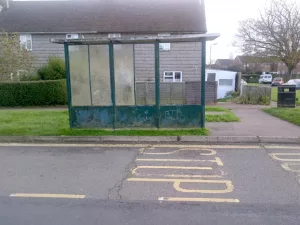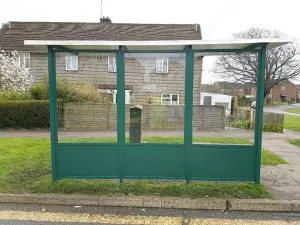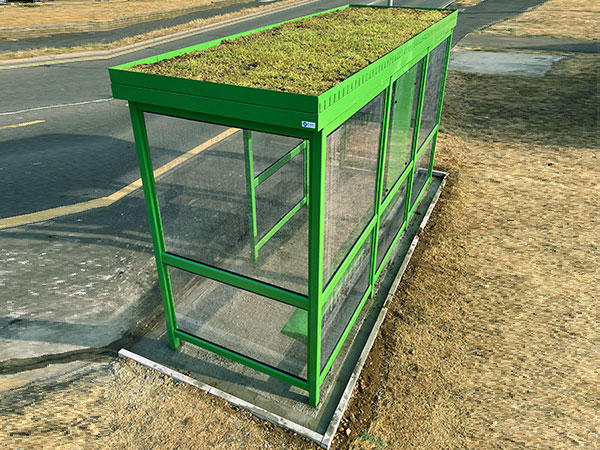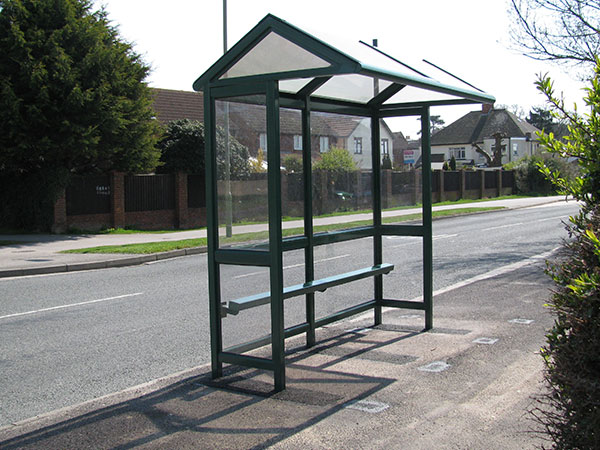Bus Shelter Buyer’s Guide
Are you responsible for procuring bus shelters? At GW Shelter Solutions we provide durable, properly designed bus shelters for all types of sites. With over 40 years of experience, we design, install, and maintain bus shelters for councils and contractors throughout the UK.
We help our clients through the complete process, ensuring that they are able to choose the right shelters for each location and don’t make expensive mistakes. Selecting bus shelters needs full attention to detail, and we are here to help every step of the way.
Our comprehensive buyer’s guide highlights the points you need to consider. For further information, we’re always available to answer your questions. Tell us about what you need, and we’ll provide a fast, accurate quotation, including details of timings.
Why choose GW Shelter Solutions?
Over four decades of experience makes us bus shelter experts. We are proud of our reputation as one of the leading manufacturers in the country. We are first choice for many parish, town and county councils, as well as for advertising businesses, builders, developers and transport companies.
What makes us different is that we provide all the information you need to make a fully informed choice about shelters. We can look after all aspects of design, installation and maintenance, and work with our clients every step of the way. The amount of repeat business we receive shows that our services and products are exactly what our clients want.
Why is the location of a bus shelter important?
The specific location of a bus shelter dictates your options when it comes to layout and size. That is why having a full view of the site is so important.
Site survey
The position of a bus shelter needs to work for passengers, but has to take account of the site. Accessibility for able-bodied and disabled passengers is a priority, and needs to take account of the position on the pavement, as well as headroom.
For an initial quotation, ideally we need the address or a photograph of the location of the shelter. Before proceeding, we may survey the site to make sure it is suitable for the shelter.
Planning permission
Generally, bus shelters do not require planning permission unless they include an advertising panel. If this is the case, be sure to review local regulations set out in the Town and Country Planning Act 1990.
Permits
If your installation involves excavation or traffic management, a permit or licence might be necessary. We can assist in preparing and submitting the required applications.
Groundworks
New shelters or extending existing shelters usually involves excavating the pavements and surrounding areas, and replacing the surfaces after the shelter is installed. Our qualified team can carry out all required excavation and reinstatement work, including the avoidance of any underground cables and services.
Position
You will need to know exactly where the shelter is to be positioned, taking into account:
- front or back of path configuration
- is there adequate clearance for pedestrians to comfortably walk past
- the position relative to the curb and other obstacles.
Keep in mind minimum headroom requirements, which depend on factors such as the inclusion of an RTPI (real time passenger information) display or proximity to a cycle lane.
What type of bus shelter do you require?
The key factors to consider when deciding on the type of bus shelter are:
- Accessibility for all passengers
- Size and layout of the site
- Level of protection from wind and rain
- Options for seating, advertising and signage
These factors will dictate your choice of shelter structure, roof and size.
Shelter structure
Shelters can be supplied as cantilever or enclosed.
Cantilever shelters have a clean and open look, with easy access and a roof supported on welded steel uprights. End panels can add extra protection from bad weather, and can be supplied in full, half or quarter width. It is essential to consider how end panels impact on access.
Enclosed bus shelters have panels on all sides, and provide greater protection against harsh weather conditions. Entrances need to be placed for optimal accessibility and functionality, and can be single or double, with a recommended minimum width of 1m to allow access by wheelchair users. Our resource centre can provide guidance on entrance positioning.
See bus shelter drawings here.
Bus Shelter Roof types
Bus shelter roofs come in three different basic structures:
- Pitched Roof
A pitched roof is slanted, allowing water and debris to run off easily. It offers a traditional and aesthetically pleasing appearance.
- Barrel Roof
The barrel roof provides a curved design that is both functional and visually appealing.
- Flat Roof
A flat roof offers a modern and clean look. You can also opt for a flat roof with a living (sedum) green roof, which not only enhances the shelter’s appearance but also contributes to environmental sustainability.
Bus shelter dimensions
Guidance for the space to allow per person is typically set at 04m.
Once you have calculated the size of shelter required, you can choose from predefined lengths with specified pitches between posts. This allows you to customize the shelter’s dimensions to fit the available area.
The width of the shelter depends on the available footpath space and its location. Different roof types have varying standard widths, so choose the width that best suits your space constraints while ensuring comfortable passage for pedestrians.
Bus Shelter Seating

Seating in bus shelters is an important factor for passenger convenience, and can be an integral part of the structure. Seating within a shelter can be mounted to the framework and commonly consists of a bench on brackets.
We can offer a range of seating:
We recommend bus shelter benches made of aluminium which is extremely durable, easy to maintain and provides reasonable comfort. Tubular steel handles add to passenger convenience by defining space on the bench, and aiding sitting and standing. The other type of seating we frequently install GRP (glass reinforced plastic) and wooden benches, made from tough iroko hardwood.
Seating can also be supplied as free standing.
Materials, finishes and colours
The main materials used in bus shelters are a combination of steel and aluminium this provides strength and durability. Coatings and primers are used to finish materials to enhance the look of the structure, and to protect surfaces.
At GW Shelter Solutions we offer 12 standard colours, with further options of other RAL colours on request.
Glazing options
We can offer four glazing solutions:
Toughened glass can be used for maximum light transmission and a high level of clarity. In addition to its impact resistance, toughened glass is easy to clean and maintain and has excellent chemical resistance. It also remains optically clear.
Polycarbonate is used for the roof glazing and also side glazing. Like glass, it has excellent light transmission, can be formed and has high impact resistance making it the ideal material for shelters that can be prone to vandalism, although it has a lower scratch resistance than glass. Polycarbonate is available in clear and bronze.
Galvanised steel panels can be used in areas of high vandalism or where shelters back onto hedges or walls.
Galvanised steel mesh panels are used for optimum resistance to vandalism. They prevent any written graffiti and are more durable against burning and scratching.
Bus shelter equipment

Bus shelter lighting
Lighting is important for dark winter mornings and after the sun goes down. Artificial light in shelters helps to create a sense of security, and helps passengers to read printed timetables and any other notices.
We provide integrated LED lighting solutions operated by mains power or solar panels. Our LED fittings are energy efficient, and are easy to install in canopy structures. Options include sensors for dusk and dawn, PIR (passive infra red) sensors to detect movement, and timers.
Other equipment
In addition to providing protection from the elements and a degree of comfort for passengers, bus shelters can feature accessories which provide information and create opportunities for income-generation from advertisers.
Timetable cases of various sizes can provide essential information on bus services. Cases should be weatherproof, impact resistant and lockable. Similarly, advertising boxes can be provided for standard poster sizes within the limitations of the shelter dimensions.
Bus shelters can also feature site identification numbers and stop names, as well as graphics and information on brackets and glass. Shelters should also be compatible with RTPI (real time passenger information) displays.
Bus shelter maintenance


When choosing a bus shelter solution, it is important to consider repairs, cleaning, maintenance and replacement of damaged parts such as glazing. We offer a comprehensive after sales service which will ensure that your shelters stay in good condition.
Our services include repairs and refurbishment of existing shelters, including shelters installed by other companies.
How much does a bus shelter cost?
Bus shelters vary in cost according to size, type, materials and location, as well as the quality of service provided.
We pride ourselves on shelters with a life span of 15 – 20 years if properly maintained and many of our shelters remain in the ground for considerably longer.
Our services will ensure that every aspect of a bus shelter project – from bespoke design, to groundworks, fabrication, installation and maintenance – are of the highest quality.
For detailed pricing and timings, get in touch with us now so that we can discuss your requirements in detail.
Our range of bus shelters
We have developed a range of bus shelters which are suitable for all types of location, from city centres to village greens. Our core range goes under the name of Arun Bus Shelters and provides high quality, classic, practical shelter solutions. Our shelters come in a range of standard sizes, and can be configured to create much larger shelters for bus stations or other transport hubs.
All Arun shelters feature a steel, vandal resistant frame and aluminium glazing systems which can accommodate panels made from a variety of materials including toughened glass, polycarbonate, galvanised steel and steel mesh panels. Our shelters also give you options for features such as advertising panels, mains or solar powered illumination, flag brackets, timetable information and real time passenger information (RTPI).
The range includes a choice of roof styles including:
Arun Bus Shelter Green (Sedum) Roof
Different roofs suit different settings, and we can guide you on the best choice for your location.
Bus Shelter Glossary
Here are terms you should be familiar with if you are involved in bus shelter procurement.
Enclosed
Refers to a shelter with full side panels and access routes. Enclosed shelters provide maximum protection from inclement weather.
Cantilever
A shelter with a roof supported on one long side of the structure, and no sides. Works well in restricted spaces and allows maximum accessibility with the ability to have end panels added.
QEP/HEP/FEP
QEP (quarter end panel) are full height panels covering quarter of the width.
HEP (half-end panel) are full height panels at the side of the shelter covering half the width.
FEP (full end panels) are full height panels at the side of the shelter covering the complete width.
RAL colours
RAL is an industry standard colour matching system for paints, coatings are a total of over 2,800 RAL colours.
Flag bracket
A bracket to support a bus stop flag.
Mid rails
Aluminium rails which form part of the structure at approximately halfway between the top and base of each glass panel. Mid rails enhance visibility and safety.
Ground fixing
The way the shelter is permanently fixed in place, either by bolts or by digging the support posts into the site.
RTI/RTPI
Real time information or real time passenger information.Our shelters can accommodate Real Time Passenger Information displays. Shelters can be supplied with brackets and cabling to accept RTPI units. RTPI units will be supplied by others.
FOP
FOP (front of path) refers to the position of the shelter on the walkway when viewed from the road. A clearance of a minimum of 450mm from the road is normally required.
BOP
BOP (back of path) refers to the position of the shelter on the walkway when viewed from the road
PIR Sensors
PIR (passive infrared sensors) are used to trigger lights when people approach or enter the shelter.
Timetable cases
Shelters can accommodate timetable cases in a range of sizes including:
A4 – 210mm x 297mm
AA4 – 210mm x 594mm
AAA4 – 210mm x 891mm
DRU (Double Royal Unit) – 635mm x 1016mm








